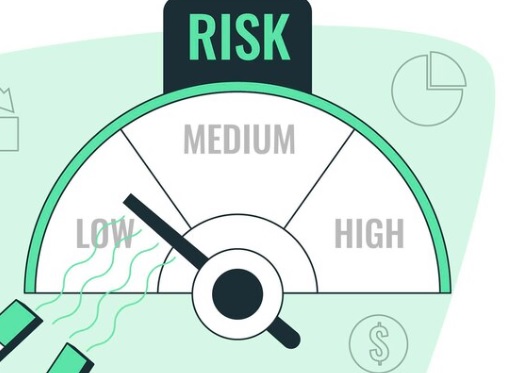Developing a skill set that enables you to interpret market fluctuations becomes crucial in the fast-paced world of financial markets. It is where trends can change at any time. Reading price action is one such ability that has endured over time. Traders have been striving to outperform one another for ages. They are always utilizing indicators, calculating intricate calculations, and coming up with new techniques.
Indicator-based tactics and price action strategies make up the two main categories into which almost all trading strategies fall.
We’ll explore the benefits of price action reading in today’s write-up. It will help investors and traders alike. So, stay with us and keep reading.
Understanding the Concept of Price Action
A tried-and-true trading tactic is to look for patterns in the erratic price swings of stocks. This is known as price action. Generally, the price action includes the following elements:
The horizontal lines are useful for illustrating resistance and support. When a stock has a huge volume breakout bar above the resistance line, price action traders typically purchase the stock. When a breakout bar appears below the main line, they pull out.
Price action chartists employ trend lines. It determines the stock price’s potential direction.
Candlestick charts are the primary tool used by price-action traders.
Top 5 Reasons: Why Learn to Read Price Action?
Technical indicators hold important value in the financial market. If not all traders first enter the stock market, technical indicators will help them a lot. The fact is that no number of technical indicators can make them experienced traders if they do not comprehend price action. The fantastic benefits of using price action to inform trading decisions are as follows:
Help in the Identification of Resistance Levels and Support
Traders have strategic entry and exit points when they can identify these levels with the help of price action. Technical analysis heavily depends on the identification of critical support and resistance levels. These are the spots where price action analysis shines. In the market, where prices frequently fluctuate, support and resistance levels serve as barriers. These levels can be recognized and evaluated by patterns in price movement. It is created by past interactions between buyers and sellers.
Traders may set realistic profit objectives. They can efficiently manage risk by having a solid understanding of support and resistance levels. Regardless of whether the market is trending or ranging, they help a lot with risk management. This ability helps traders traverse volatile markets. This analysis gives them confidence, making it especially useful during times of increased volatility.
Spot Accurate Entry and Exit Spots
Price action is the most reliable method for identifying accurate entry and exit positions. Buyers typically sell their stocks. The fact is that the price of the stock declines when it reaches a point where it becomes doubtful. The reversible instances of this event lead to the development of resistance. In a similar situation, support is established when a stock price fails to break through a lower level.
When the price hits resistance, you can short as a price action trader. On the other hand, when it hits the support, you can buy. You need to occasionally close the position if there is a breakout over the resistance or support line.
For spotting trend continuations and reversals, price action is a useful tactic. The price of an asset can be predicted in the future using a variety of candlestick patterns. More so, trend lines and chart formations also help to predict future movement with accuracy. Securing a competitive edge in the market may require the ability to identify these trends.
Adjustment to Different Market Conditions
The financial markets exhibit a dynamic nature. They exhibit a range of conditions, from volatile and stable to trending. Traders with this skill set can apply their ability to read price activity in the volatile world of market situations. Price action analysis is flexible enough to be tailored to suit a variety of market conditions.
In today’s fast-paced economy, where situations can change quickly, this adaptability is very helpful for traders. Price action readers are better able to modify their plans quickly. Keeping them flexible and alert to new opportunities or dangers helps them make a mark in this volatile world.
Entails Effective Risk Management
Successful trading involves more than just placing lucrative deals. It also entails effective risk management. Traders can gain important insights into probable price reversals and market uncertainties.
The analysis of price activity helps them get valuable information. To reduce possible losses, this knowledge is crucial for strategically placing stop-loss orders. Before making a deal, price action analysis enables traders to evaluate the risk-to-reward ratio. Through an understanding of price movements, traders may place stop-loss and take-profit orders optimally. Limiting potential losses while maximizing profits is a fantastic analytical tool for traders. Long-term success and profitability in the financial markets require this methodical approach to risk management.
Actual Reflection of Market Conditions
The most accurate representation of market sentiment is found in price action. Price action research is grounded in the current market’s movements. In comparison with lagging indicators, which depend on past data, price action shows the actual representation of data.
Traders can obtain insights into the psychology of market players by analyzing and evaluating price movement on a chart. Is the market characterized by confidence or uncertainty? Price action nuances provide answers to all those queries from investors.
To make wise trading selections, one must understand and comprehend the sentiment of the market. It gives traders the ability to spot strong trends. Additionally, it predicts possible reversals and assesses the general mood of the market. Traders who are proficient in interpreting price action can remain ahead of the curve. It helps them to make choices that are consistent with the mood of the market.
Additional Benefits of Read-Price Action
Acquiring the ability to interpret price movement takes time, and it is an ongoing process. By continuously analyzing and evaluating changing price movements, traders can improve their abilities to handle various market conditions. It hones their skills and plans and makes them trade like professionals.
Understanding price action entails identifying patterns like triangles, heads, and shoulders. Trading professionals may have a better grasp of probable future market changes.
Price action interpretation allows traders to operate more quickly and intelligently, particularly in volatile and fluctuating markets.
The state of the market can alter quickly since it is always fluctuating. Price action readers are more capable of recognizing shifting market conditions. It helps them modify their strategy accordingly.
Technical indications are useful. By gaining information straight from the price chart, price action analysis helps traders become less dependent on trailing indicators.
Final Words
The ability to interpret price action is a talent that is independent of economic cycles and market movements. It gives traders a better comprehension of the events of the market. Additionally, it improves their capacity for reasoning and encourages a methodical approach to risk management.
Learning price action analysis can help both novice and experienced traders. More so, it helps investors understand the inner events of the financial markets. It enables them to make informed decisions and navigate the complexity with assurance.




